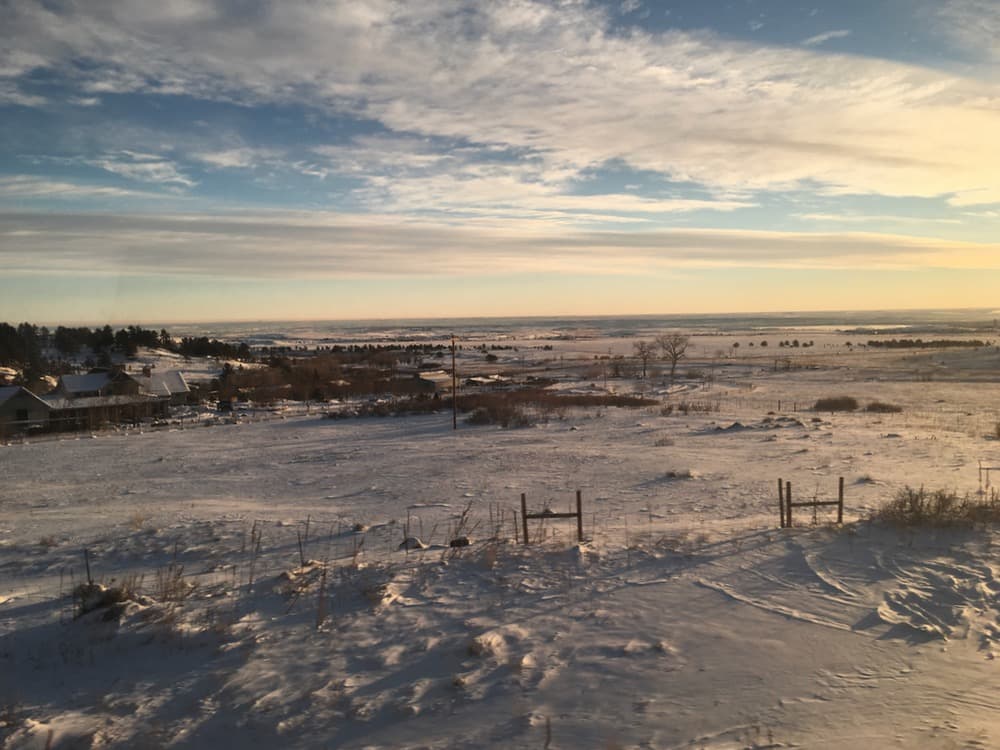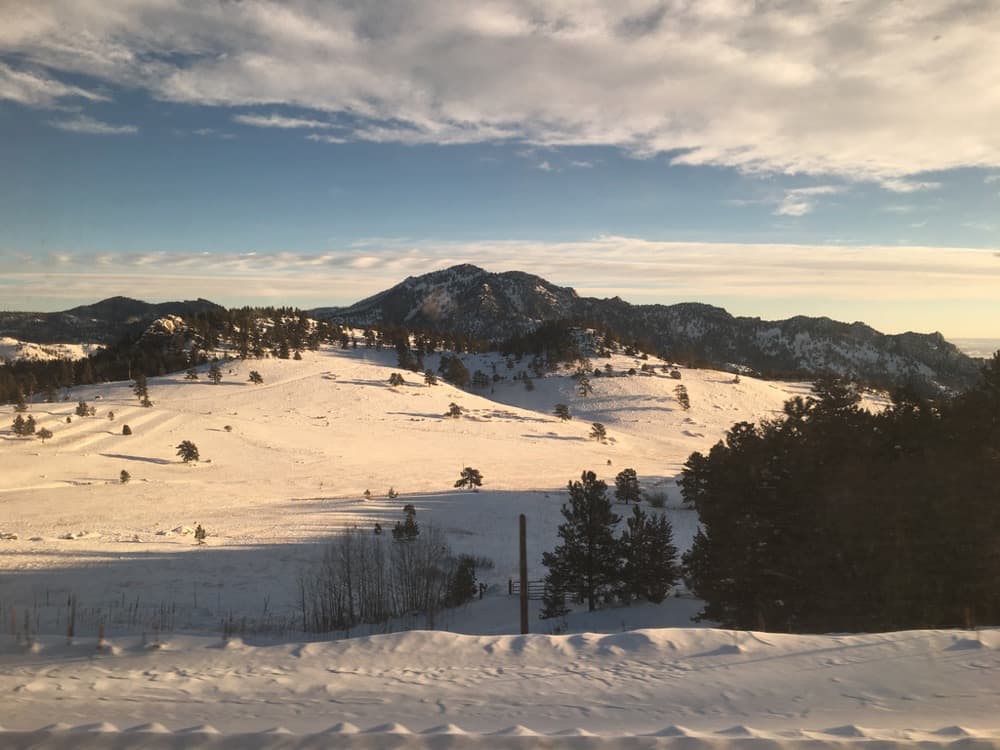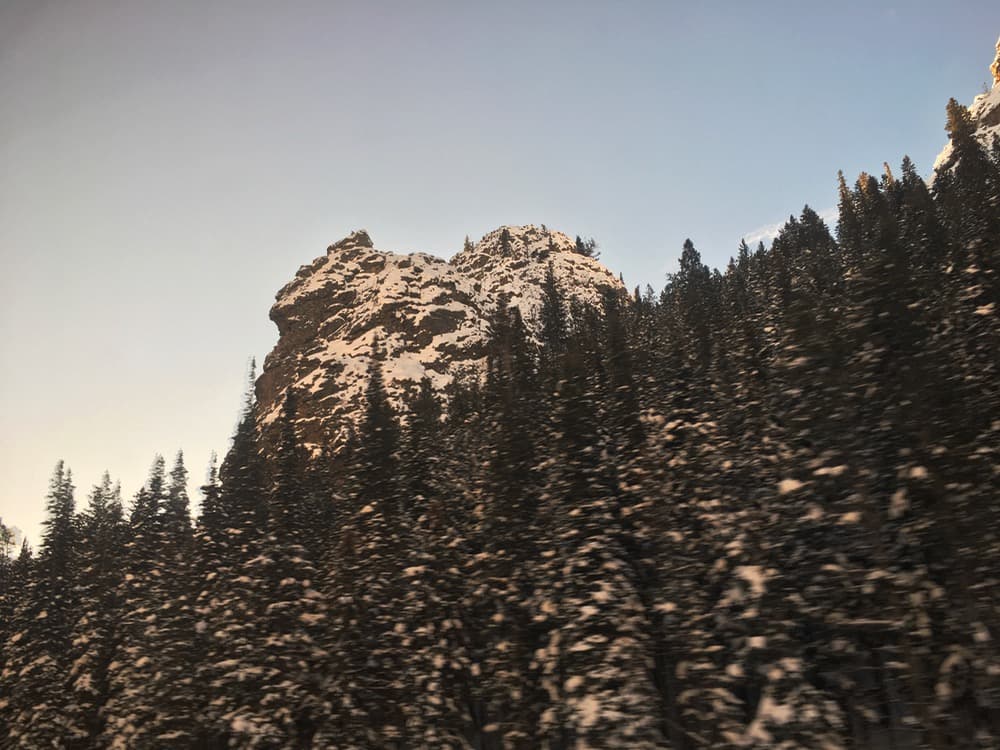
People had two reactions when they heard the ski train to Winter Park would be returning to regular service this year: a.) That's wonderful! b.) That's expensive!
After riding it last Saturday with my friend/colleague Stephanie, I can tell you that both are correct. It's a really great ride, and it costs anywhere from $39 to $59 each way for adults, depending how early you book your ticket. Tickets in 2008 for the same route were $59 roundtrip before service was discontinued.
This post will go over my impressions of the journey and then dive into a discussion about why it costs what it does, including comment from Amtrak.
We were told to be at Union Station by about 6:15 a.m.
If possible, I'd recommend riding light rail or a ride-hailing service to Union Station, so you don't have to park. If you drive, there is valet parking available at Union Station for $11 a day, according to Amtrak's map.
Anyway, it was hard not to smile at the sight of the Amtrak double-decker warming beneath the canopy. I handed off my skis to be stashed in a lower-level baggage car and headed up to car No. 2. (From what I can tell, all 500-something passengers sit on the upper levels.)
First observation: appropriately warm and cozy. Second observation: free yogurt, but I didn't get any. We were free to come and go as we pleased while the train idled, so there's plenty of time to get coffee and a bagel. (The bacon, egg and cheese at Acme is decent but overpriced for my tastes.)
Our car let out a little cheer once the train got moving, right on time at 7 a.m. Then we stopped a few hundred yards later, waiting for the tracks to clear.
The journey out of Denver was fascinating, with views of Lower Downtown and the South Platte that I'd never quite seen before. "I have mixed feelings about that," another passenger commented as we passed tents along the river, referring to the city's sweeps of homeless encampments.
Quite a few folks said that they'd never been on a train before (!) – so, I guess this is one way to get people on transit. The car itself seemed slightly dated but quite comfortable, and it had the two things you really want: leg room and a standard electrical outlet. (Ed. note: Andy is tall. If he says there's leg room, there's leg room.)
The city fell away to suburbs as we steamed north and west and onto the open hills. The sun climbed with us, morning light and shadows reaching across the plains and the city below. Our neighbors, meanwhile, gleefully looked up the delays that were mounting on Interstate 70.

The train rounded a steep grade up the mountainside for thousands of vertical feet, then dove into the canyons and tunnels of the high-country route.

The journey, undeniably, is wonderful. A train track can climb through much narrower, higher terrain than a highway, and it doesn't bring Taco Bell with it. There was hardly a sign of human life for many miles outside our window. Plus, Amtrak's magazine is better reading than it has any right to be -- easily better than Southwest's.
The route ends with almost 10 minutes of darkness through the Moffat Tunnel. We buckled up our boots while we waited -- and suddenly we were there. The train pulls up improbably close to the mountain, barely a few yards from where I clipped into my skis.

We were on the lift by 9:15 a.m.
I've done better time driving – but I've also done a lot worse. It was nice, too, to know that we would leave at 4:15 p.m. without a worry about traffic. We rode one of our longest days all year, got tipsy at the bar and rode merrily home.
Our crew on the way back seemed to be having a really good time of it, cracking jokes and messing with the passengers. One of the volunteer hosts put it best: "They get all these people who are never happy about riding these trains across the country," they told us. "Now, they've suddenly got a train full of happy passengers."

I loved it -- but why is it so expensive?
I'm a weekend warrior, averaging maybe 20 days skiing a year. Given the cost of my pass, that's about $30 a day. I'm not ready to triple that with a train ticket.
For context: Back in 1988, you could get a round-trip ticket on the same route for just $22, or about $45 in today's money. In 2008, coach tickets were $59 round trip. For $85, you got yourself a continental breakfast and some extra snacks too.
On the other hand, previous owner Phil Anschutz was reportedly running the service at a loss as something of a community service. He's very wealthy, but rising costs still led his company to sell off the service back in 2009. Obviously, something wasn't working there.
So, I asked: Why does the ski train cost what it costs?
Marc Magliari, an Amtrak spokesman, made a couple points. First, he said, the trains we're riding now are newer and nicer.
"The cars [of old] were historic, and they were great looking cars, but everything was cramped. You had to bring your skis and your poles with you to your seat," he said. "From a ridership experience, this version of the train is just far superior."
The various freebies that passed through the cars – yogurt, sunscreen, etc. – will be regular features, he said, and they may sweeten the "value proposition" with some other arrangements later this season, he said.
Also, he pointed out that if you book early, you're looking at $78, which isn't that different from the old price tag, and you can get half-price tickets for kids and discounts for groups. It's also easier to book on the new online system, he said.
I asked if Amtrak would tell me about the profit margins and business arrangements.
That was a no.
For context: The state and local governments kicked in $1.2 million of the $3.5 million project to install the new train platform at Winter Park Resort. Amtrak gets more than $1 billion a year in subsidies from the federal government. But, true, it is a private company and doesn't have to tell me anything about its dealings.
Either way, I wish the Winter Park Express was more of a transit service than a novelty journey. But I suppose that skiing – and the trains that take us there – are going to stay a luxury.
"They are priced in a way that the market certainly seems to be embracing them," Magliari said. "We have thousands and thousands and thousands of tickets sold."













